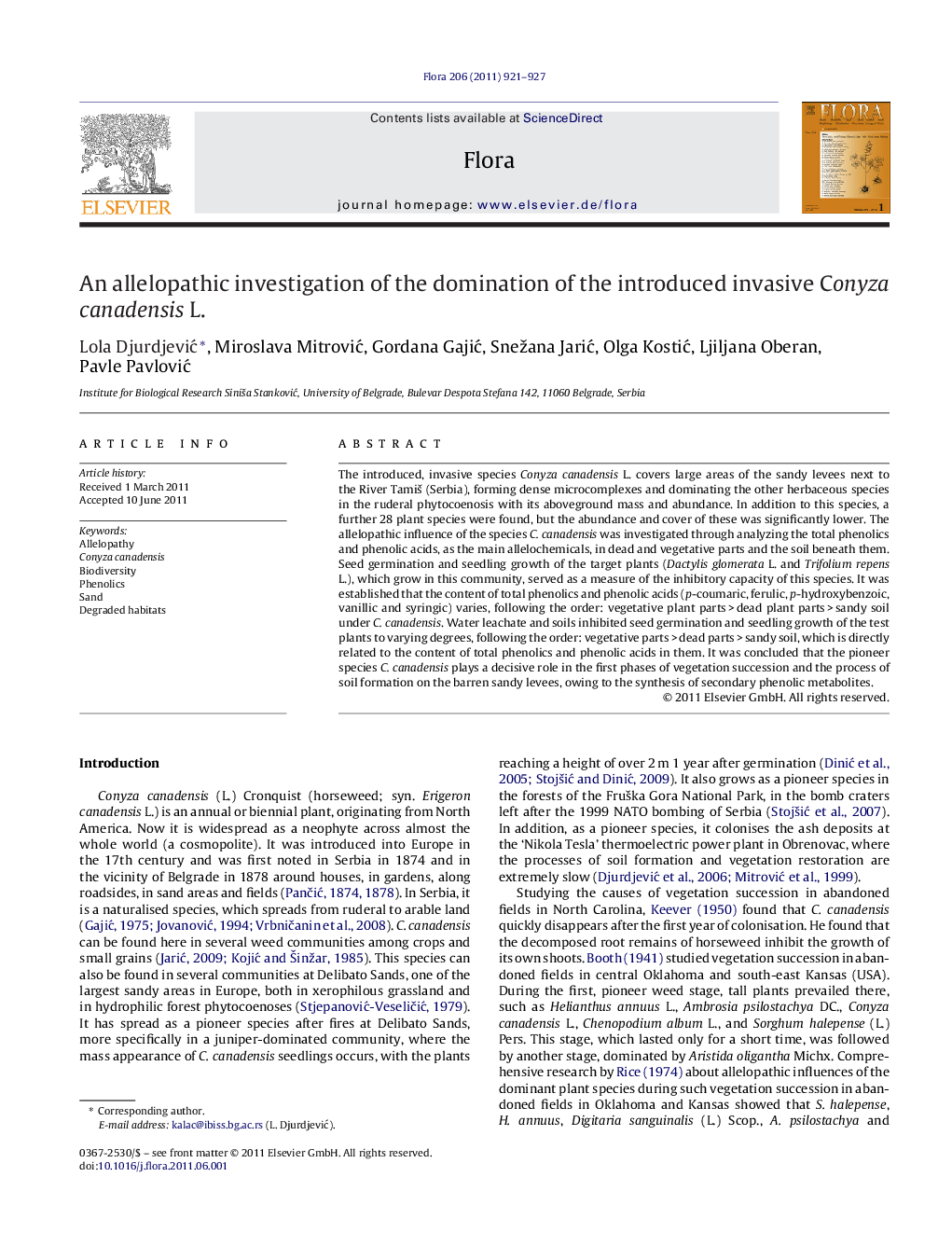| Article ID | Journal | Published Year | Pages | File Type |
|---|---|---|---|---|
| 2179795 | Flora - Morphology, Distribution, Functional Ecology of Plants | 2011 | 7 Pages |
The introduced, invasive species Conyza canadensis L. covers large areas of the sandy levees next to the River Tamiš (Serbia), forming dense microcomplexes and dominating the other herbaceous species in the ruderal phytocoenosis with its aboveground mass and abundance. In addition to this species, a further 28 plant species were found, but the abundance and cover of these was significantly lower. The allelopathic influence of the species C. canadensis was investigated through analyzing the total phenolics and phenolic acids, as the main allelochemicals, in dead and vegetative parts and the soil beneath them. Seed germination and seedling growth of the target plants (Dactylis glomerata L. and Trifolium repens L.), which grow in this community, served as a measure of the inhibitory capacity of this species. It was established that the content of total phenolics and phenolic acids (p-coumaric, ferulic, p-hydroxybenzoic, vanillic and syringic) varies, following the order: vegetative plant parts > dead plant parts > sandy soil under C. canadensis. Water leachate and soils inhibited seed germination and seedling growth of the test plants to varying degrees, following the order: vegetative parts > dead parts > sandy soil, which is directly related to the content of total phenolics and phenolic acids in them. It was concluded that the pioneer species C. canadensis plays a decisive role in the first phases of vegetation succession and the process of soil formation on the barren sandy levees, owing to the synthesis of secondary phenolic metabolites.
